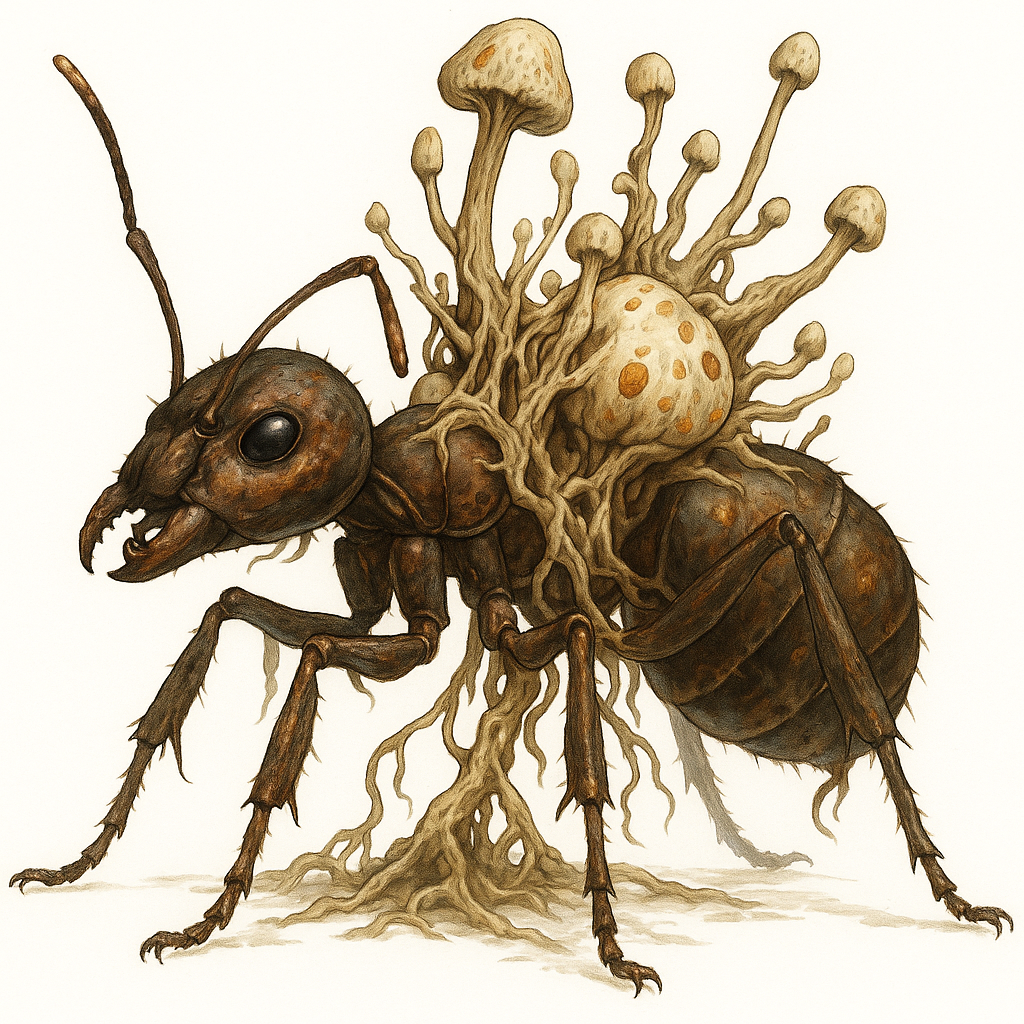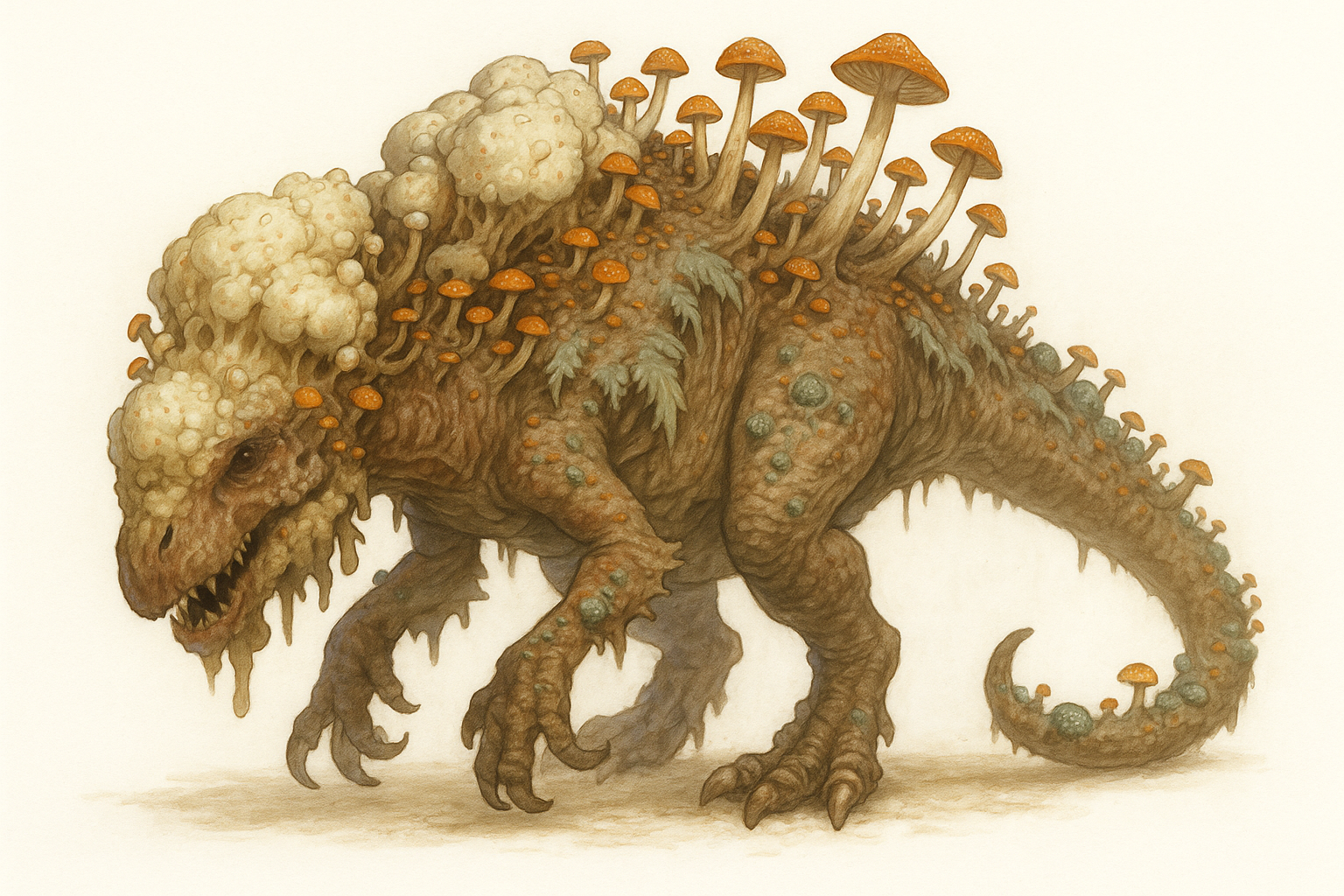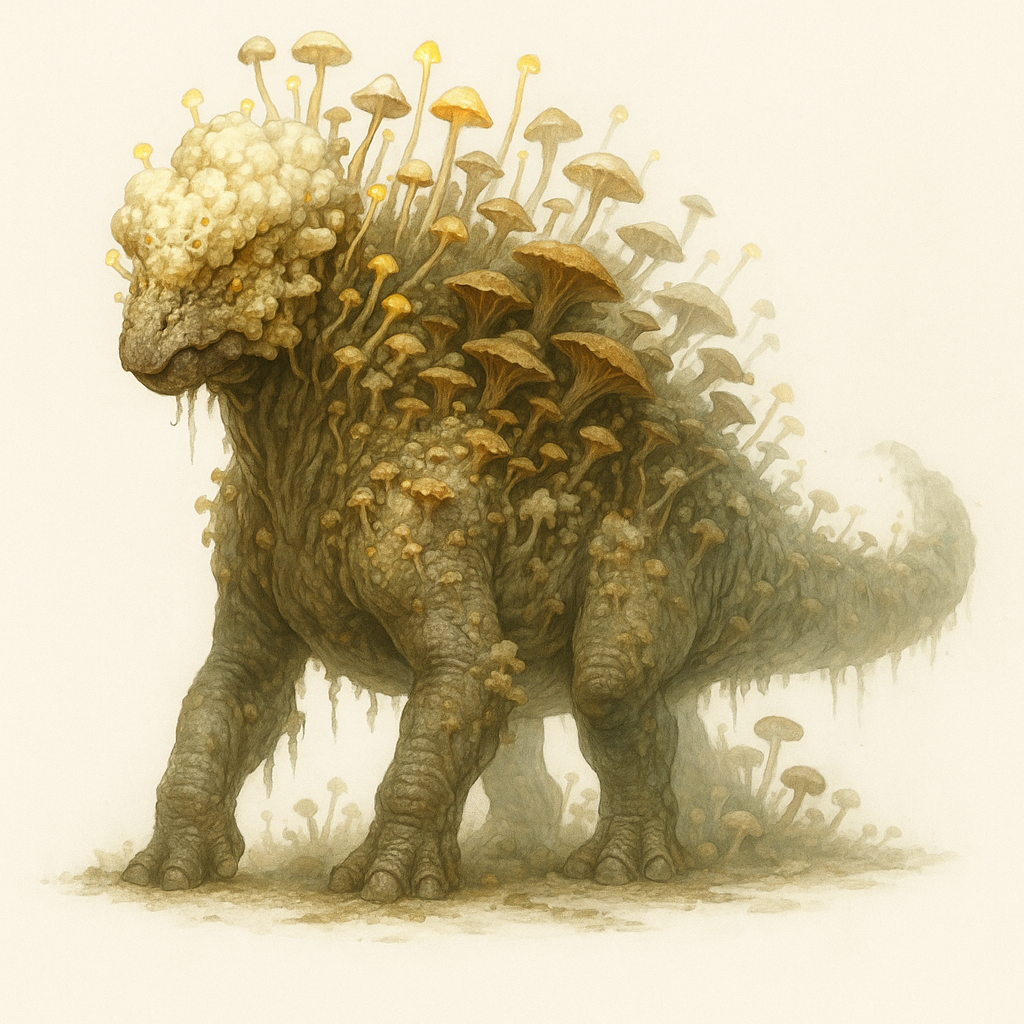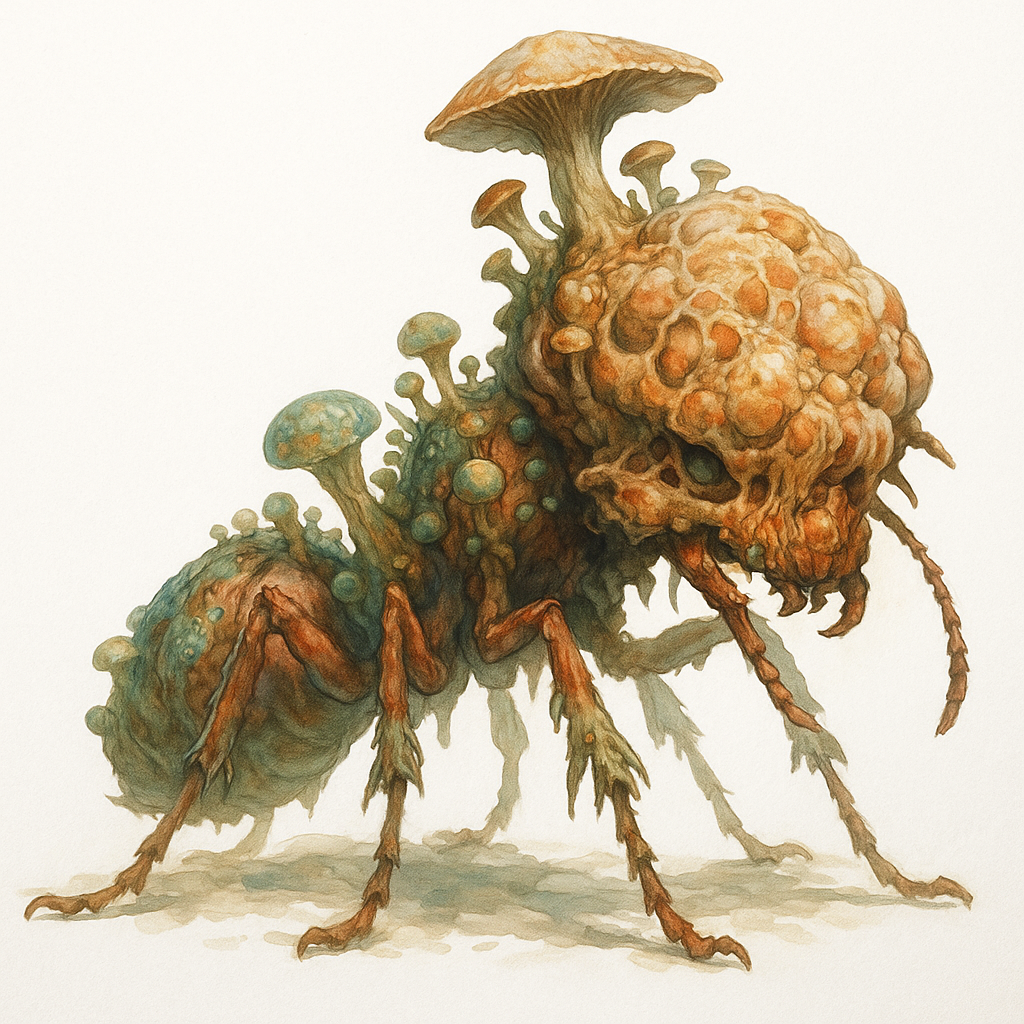Mycoids
They are mindless in origin, but the oldest hives show signs of collective awareness, coordinating infestations over vast distances. Some whisper of a Mycoid Crown, a swollen fungal intelligence dreaming beneath the roots of the world.
Mycoids are parasitic fungal lifeforms that infest living hosts—beasts, humanoids, even dinosaurs—and slowly take control of their bodies. Once embedded, the fungus threads through muscle, brain, and bone, overriding will with a singular instinct: to spread. To the Mycoids, all life is fertile ground. They do not hate. They only hunger.
Reproduction
Mycoids reproduce through airborne spores, which drift in dense, humid environments or burst from bloated corpses. Hosts under their control may appear dazed or contorted, often bearing visible fungal growths—stalks, fruiting caps, or oozing lesions—especially around the spine, skull, or mouth. They will try to spread the spores more efficiently by wounding healthy creatures.
Once infected with spores, the new host slowly loses its sense of self as the fungi spreads into its brain. This process can take weeks depending on the resilience of the infested creature.
A partially infected Gigantea ant with fungal growths on its abdomen
Mycoid-Dinosaurs, fully infected with no sense of self







Comments